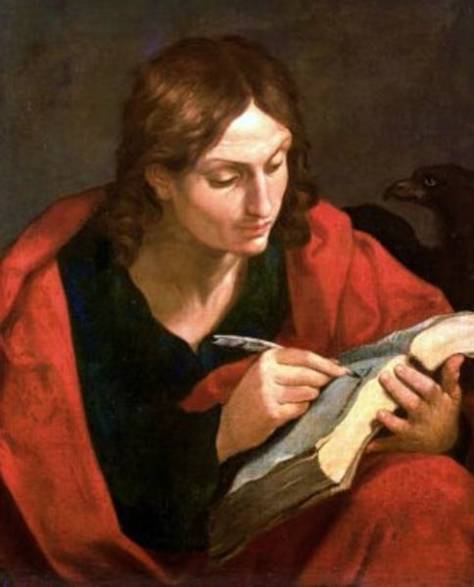
John was with Peter when the first great miracle after the Resurrection took place; the cure of the man crippled from birth which led to their spending the night in jail together. The mysterious experience of the Resurrection is perhaps best contained in the words of Acts: “Observing the boldness of Peter and John and perceiving them to be uneducated, ordinary men, they [the questioners] were amazed, and they recognized them as the companions of Jesus” (Acts 4:13).
St. John seems to have remained chiefly at Jerusalem for a long time, though he sometimes preached abroad. Parthia is said to have been the chief scene of his apostolical labours. St. Austin sometimes quotes his first epistle under the title of his Epistle to the Parthians; and by a title then prefixed to it in some copies it seems to have been addressed to the Jews that were dispersed through the provinces of the Parthian empire.
Certain late missionaries in the East Indies assure us, that the inhabitants of Bassora, a city upon the mouth of the Tigris and Euphrates, on the Persian gulf, affirm, by a tradition received from their ancestors, that St. John planted the Christian faith in their country. He came to Jerusalem in the year 62 A.D. to meet the rest of the apostles who were then living, when they chose in council St. Simeon, bishop of that church after the martyrdom of St. James the Less. It seems to have been after the death of the Blessed Virgin that St. John visited Lesser Asia, making those parts his peculiar care, and residing at Ephesus, the capital of that country.

St. John, in his extreme old age, continued often to visit the churches of Asia, and sometimes undertook journeys to assume to the sacred ministry a single person whom the Holy Ghost had marked out to him. Appollonius, not the Roman senator, apologist, and martyr, but a Greek father who wrote against the Montanists, and confuted their pretended prophecies step by step, about the year 192 A.D., assures us that St. John raised a dead man to life at Ephesus St. Epiphanius affirms, that St. John was carried into Asia by the special direction of the Holy Ghost, to oppose the heresies of Ebion and Cerinthus. The very characteristic of St. John was universal meekness and charity towards all the world. But towards himself he was always most severe; and St. Epiphanius tells us, that he never wore any clothes but a tunic and a linen garment, and never ate flesh;
In the second general persecution, in the year 95, St. John was apprehended by the proconsul of Asia and sent to Rome, where he was miraculously preserved from death when thrown into a cauldron of boiling oil. On account of this trial, the title of martyr is given him by the fathers, who say that thus was fulfilled what Christ had foretold him, that he should drink of his cup. The idolaters, who pretended to account for such miracles by sorcery, blinded themselves to this evidence, and the tyrant Domitian banished St. John into the isle of Patmos, one of the Sporades in the Archipelago. In this retirement the apostle was favoured with those heavenly visions which he has recorded in the canonical book of the Revelations, or of the Apocalypse: they were manifested to him on a Sunday in the year 96A.D.

The feast of St. John is celebrated on the 27th of December. St. John is the patron saint of love, loyalty, friendships, and authors. He is often depicted in art as the author of the Gospel with an eagle, symbolizing “the height he rose to in his gospel.”In other icons, he is shown looking up into heaven and dictating his Gospel to his disciple. St. John is called the Apostle of Charity, a virtue he had learned from his Divine Master, and which he constantly inculcated by word and example. The “beloved disciple” died at Ephesus, in Turkey and is also the patron saint of Anatolia, Turkey (Asian Turkey).

- https://www.learnreligions.com/disciple-jesus-loved-john-the-apostle-701065
- https://www.allaboutjesuschrist.org/john-the-apostle-faq.htm
- https://www.ewtn.com/catholicism/saints/john-the-apostle-651
- https://www.franciscanmedia.org/saint-john-the-apostle/
- https://catholicexchange.com/st-john-the-apostle-2
- “Jesus the world made flesh “, Part 1 (John 1 -10) by Stephen Benz.
- https://www.catholic.org/saints/saint.php?saint_id=228
- https://www.catholic.org/saints/saint.php?saint_id=228
Written by Sennen Chris Pinto. Sennen is an engineer by profession and also writes Christians articles, poems and songs.
